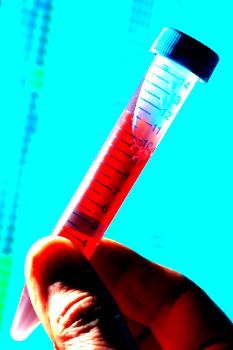Antibody balance check to tailor more treatments
 New methods for measuring antibody levels in the blood will help bring about more tailored and specialised treatments, researchers say.
New methods for measuring antibody levels in the blood will help bring about more tailored and specialised treatments, researchers say.
A newly-published study has described the use of a novel sensor for measuring the concentration of effective antibiotics in blood, and indicating their efficiency against disease causing pathogens.
Research on the new sensor was conducted by an international team featuring scientists from the University of Queensland, London Centre for Nanotechnology and Jomo Kenyatta University of Agriculture and Technology.
If the developments continue, it could be a powerful tool to fight multidrug resistant hospital ‘superbugs’.
In the shorter term it will likely give a greater understanding of the effectiveness of drug dosages required for different individuals, reducing potential toxic effects, allowing personalised treatment for patients and leading to new insights into optimal clinical regimes, such as combination therapies.
The sensor picks up the cellular stress that antibiotic molecules impose on a pathogen's cell wall target, such as a bacterium, which contributes to its breakdown.
Different to existing biosensors, the new nanomechanical sensor can accurately measure important cell stress information even when antibiotic drug molecules are only present at very low concentrations.
The researchers coated the surface of a nanomechanical cantilever array with a model bacterial membrane to use as a surface stress sensor. The sensor is extremely sensitive to tiny bending signals caused by its interactions with the antibiotics, in this case, vancomycin and the yet to be approved oritavancin, which appears to deal with certain vancomycin-resistant bacteria in blood serums.
The investigation has yielded the first experimental evidence that drug-serum complexes (antibiotics bound to the competing serum proteins) do not induce stress on the bacteria, and so could provide realistic in-vitro susceptibility tests for drugs and to define effective doses which are effective enough but less toxic to patients.
In the future, the researchers believe that with a suitably engineered surface probe, this sensor could be paired with customised drug delivery for anaesthetics, anti-cancer, anti-HIV and antibacterial therapies.
“This discovery represents a major advance in our fundamental understanding of the pathways between chemical and mechanical signals in a complex media, such as blood serum, and how this information can be used to tune the efficacy of drugs and to minimise the potential toxic side effects,” lead author of the study, Dr. Joseph W. Ndieyira said.
“Monitoring the levels of active free drugs in serum can be crucial in honing therapeutic solutions for patients to enhance drug administration. This will be particularly helpful in addressing problems of drugs which have to be used in very precise quantities and where there are large differences in how drugs affect individuals and groups. For example, overuse of antibiotics can fuel resistance to drugs or underuse of anaesthetics may lead to a patient regaining consciousness during an operation.”








 Print
Print